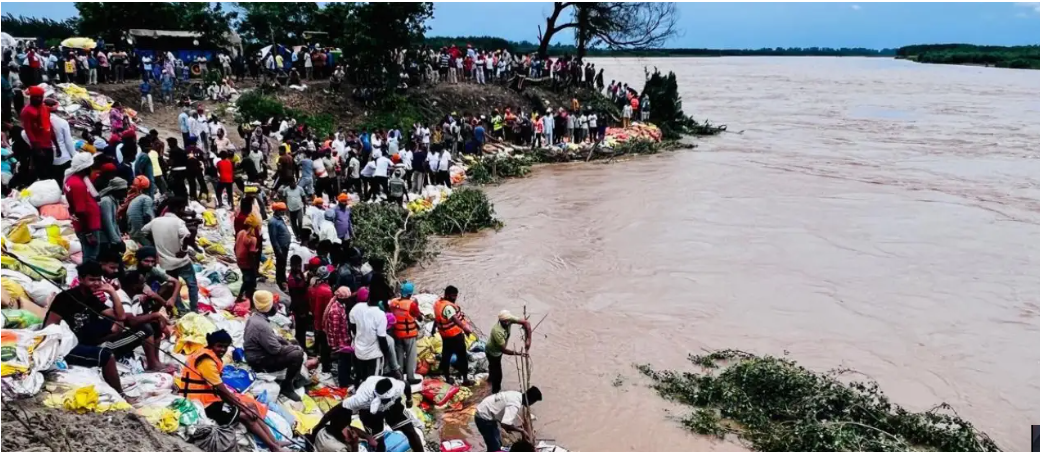
Photo: Flooded area in Punjab, India
Widespread Devastation Across Punjab
In August and early September 2025, Punjab experienced its worst floods in nearly four decades, triggered by unprecedented monsoon rains and unregulated water releases from dams including Bhakra and Pong. Over 1,400 villages across 22 districts were inundated, displacing close to four lakh people. The floods submerged nearly 3.7 lakh hectares of farmland, significantly impacting the state’s agricultural backbone, especially paddy fields ahead of harvest. Tragically, the disaster claimed the lives of at least 48 people, with several others reported missing.
Humanitarian Response and Relief Measures
The Punjab government, in coordination with central agencies and the Indian Armed Forces, has undertaken massive rescue and relief operations, evacuating over 22,000 individuals and establishing more than 200 relief camps. Medical camps are actively addressing health concerns including waterborne diseases, with distributed supplies of clean water, food, and hygiene kits to affected families. NGOs such as Khalsa Aid and Reliance Foundation have provided extensive support through community kitchens, livestock care, and sanitation initiatives. The Prime Minister’s visit on September 9 affirmed financial assistance totaling ₹13,600 crore and pledged support for rebuilding homes, schools, and agricultural infrastructure.
Long-Term Challenges and Rehabilitation
As floodwaters recede, Punjab faces significant challenges in restoring livelihoods, repairing damaged infrastructure, and preventing disease outbreaks. Farmers require assistance to revive crops and livestock lost in the deluge, while many schools remain closed or repurposed as relief shelters, interrupting children’s education. Local authorities and civil society advocate for increased investment in resilient flood management systems, including strengthening embankments and enhancing drainage to mitigate future disasters. Calls for additional financial aid ranging between ₹20,000 to ₹25,000 crore highlight the urgent need for sustained recovery efforts.
Community Resilience and Hope
Despite the scale of devastation, the spirit of Punjab’s people remains unbroken. Volunteers, religious institutions, and local groups continue providing assistance, while farmers salvage what they can from flooded fields. The state exemplifies a commitment to rebuild stronger, blending immediate relief with long-term preparedness to face climatic vulnerabilities ahead. This disaster underscores the critical importance of climate adaptation as an integral part of Punjab’s growth story.







